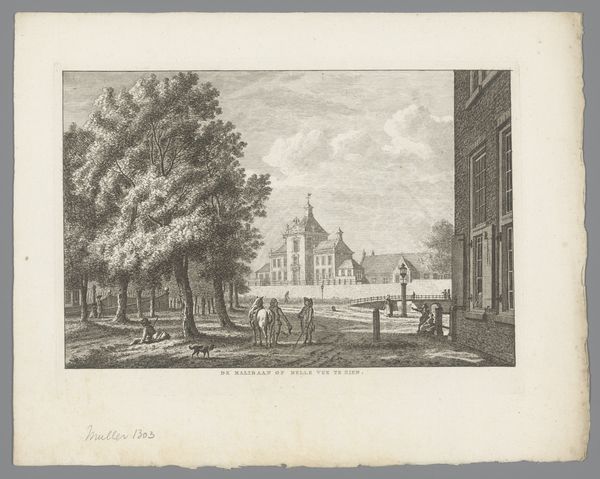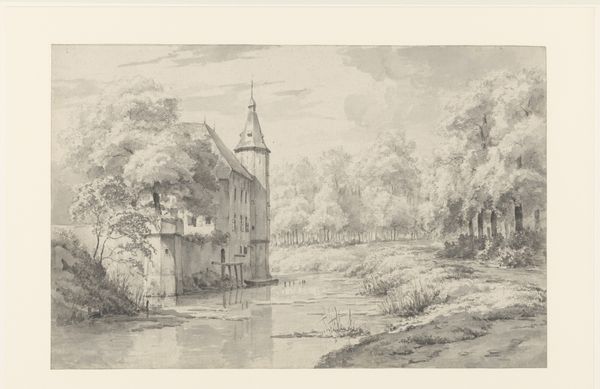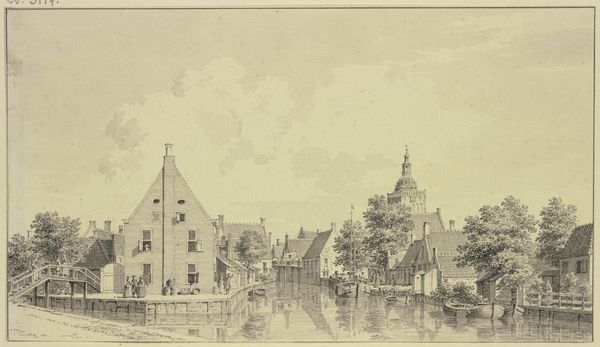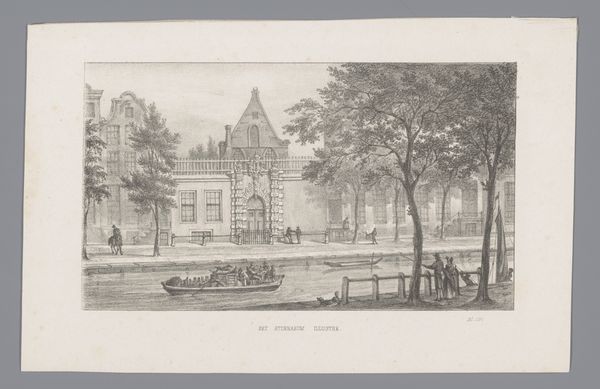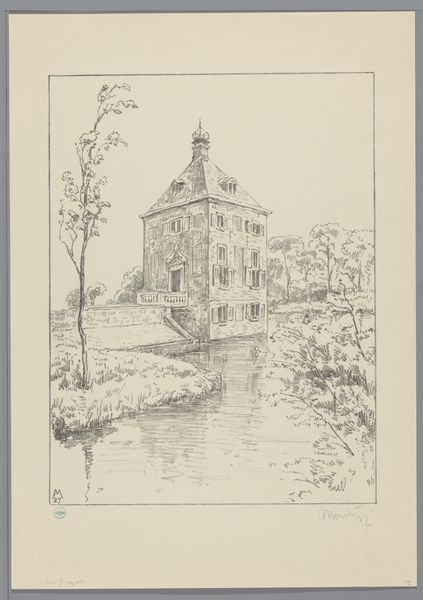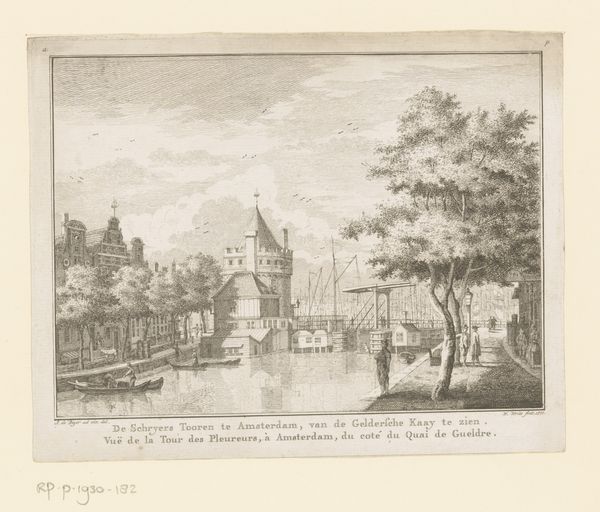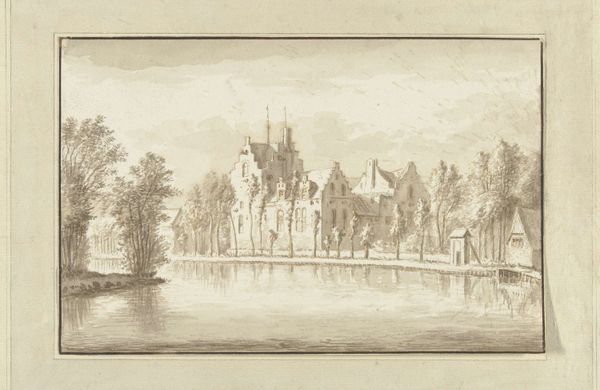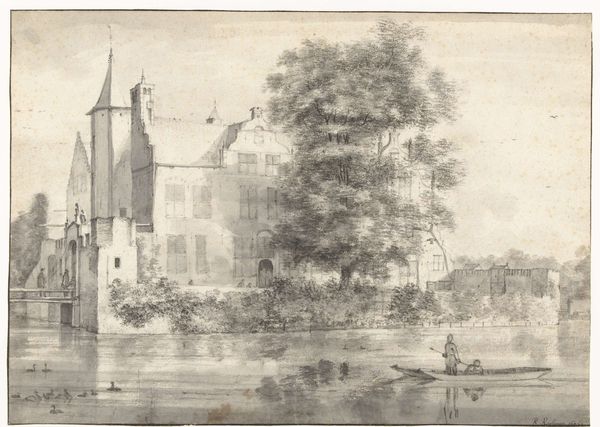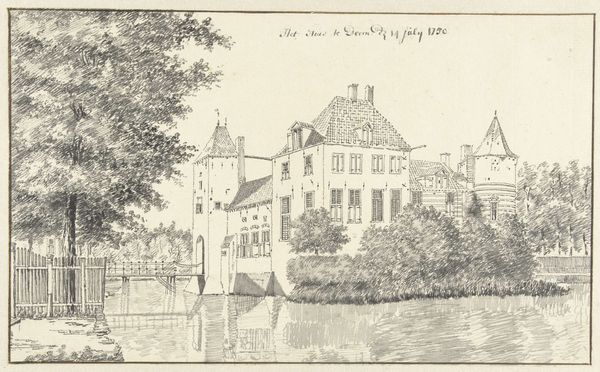
Copyright: Rijks Museum: Open Domain
Editor: This is Maria Vos's "View of Duivenvoorde Castle on the Water," created with pencil on paper around 1875. It's a detailed sketch, but there's also a certain softness to the scene. I'm struck by how still and reflective the water is. What do you see in this piece? Curator: I see a moment captured at a fascinating point in Dutch history, after major social changes occurred throughout the 19th Century and as new democratic forces began challenging traditional power structures. The detailed depiction of the castle can be viewed not just as a rendering of architecture but also as a symbol of aristocratic privilege, now facing scrutiny. Consider the artist's own position as a woman – likely excluded from those halls of power, sketching from the outside. Does the sketch serve as an objective record, or a subtle commentary on social inequalities? Editor: That's interesting! I hadn't considered it from that angle. I was focusing on the picturesque quality of the drawing. The castle seems romantic, not really…political. Curator: And that’s precisely where the tension lies! Romanticism in art often masked or idealized complex social realities. What does it mean to present such an idealized view during a period of social unrest? Does it serve to uphold tradition, or perhaps to critique it by juxtaposing it with an unspoken reality? Vos might have subtly addressed the political issues in a non-confrontational manner that spoke to her peers. Editor: So, it’s not just a pretty picture? It could be seen as a statement, even if subtle? Curator: Exactly! Think about who commissioned or bought landscapes like this. The rising merchant class often emulated aristocratic taste, signifying social aspirations through art ownership. Even this simple drawing allows us to question the power dynamics inherent in landscape art and its consumption during the late 19th Century. Editor: Wow, I'm going to look at landscapes differently now. It is interesting to think of art as an extension of conversations from the time it was created, especially concerning gender and class. Curator: And by continuously re-evaluating works of art within different contextual landscapes, we stay curious to a painting's original—and ever-evolving—call to social justice.
Comments
No comments
Be the first to comment and join the conversation on the ultimate creative platform.
